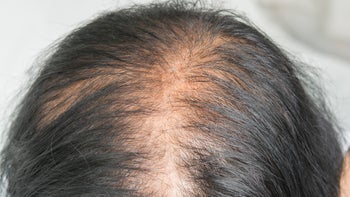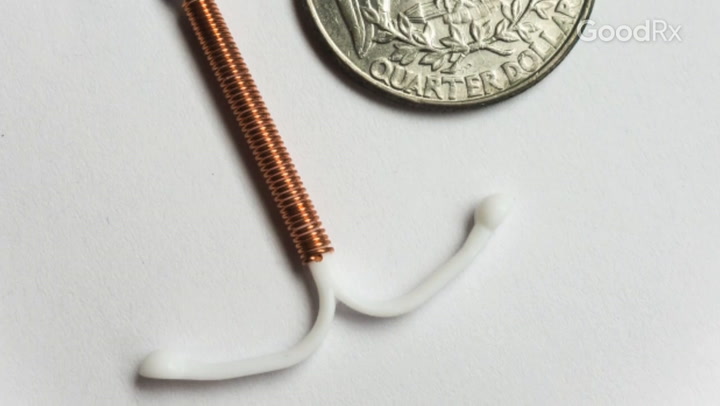
A Complete Guide to the Best Diets and Foods for Women Over 50
Key takeaways:
According to current research, the Mediterranean diet is the best way to eat to help prevent conditions that are more common for women over 50.
Eating protein is important for maintaining healthy muscles and bones. Certain vitamins and minerals, like calcium and vitamin D, are also essential.
It’s also important to limit ultra-processed foods and excessive saturated fats.
Table of contents

Life after 50 can bring increased free time, financial stability, and the wisdom to focus on the important things in life. But if health problems crop up, they can get in the way of enjoying all the wonderful things this time has to offer. Navigating conditions like menopause, increased bone loss, heart disease risk, and others are common for women in this phase of life.
There’s no way to know what lies ahead. But one thing is certain when it comes to healthy aging: diet matters.
How does nutrition change over the age of 50?
People over age 50 are more likely to see and feel the effects of unbalanced dietary habits that may have been less impactful in their earlier years.
In need of menopause symptom relief?
Get Premarin for over 55% less than the average retail price with GoodRx.

Cells accumulate damage over a lifetime, leading to the aging process. That contributes to these age-related changes:
The metabolism slows
Blood sugar metabolism changes, which increases the odds of developing diabetes
Muscle mass decreases
Bone mass decreases
Organ functions begin to decline (lung, heart, brain, kidney, and others)
Recovery from illness or injury is more difficult and takes longer
This doesn’t mean you're destined for health problems once you’re over 50. But it does mean that the way you take care of your body in the second half of your life is important.
Women over 50 have different nutritional needs. For example, aging changes how protein is made and broken down, so you’ll need to get more protein in your diet. You’ll also need more of certain vitamins and minerals, like vitamin D and calcium.
The key to nutrition over age 50 is being intentional. Because baseline calorie needs decline as people age, eating a proper balance of high-quality foods is essential.
Diet and menopause: Learn how one woman changed her diet to help deal with unpleasant menopause symptoms.
Preventing osteoporosis: Incorporate these foods into your diet to help prevent bone loss.
Weight changes in older adults: As you age, it’s normal for your body weight and composition to change. Here’s how to know when it’s a problem.
Creating the best diet for women 50 and over
The best diet for women over the age of 50 varies from person to person. Things like your lifestyle, medical conditions, and individual food access and preferences will shape your dietary needs. But no matter what that looks like for you, a balance of macronutrients and micronutrients is key.
Protein
Getting enough protein from a variety of foods is one of the most important parts of a balanced diet as you age. Proteins can come from both plant and animal sources.
Nutritious sources of protein include:
Beans and peas
Nuts and seeds
Lean meats (like poultry and fish)
Eggs
Dairy foods
Foods high in protein supply amino acids. These are the essential building blocks that your body uses to make things like proteins, hormones, and brain neurotransmitters. Protein also gives you micronutrients, like iron, vitamin B12, and zinc. Different food sources have different micronutrients.
You should aim to eat at least 20 g to 25 g of protein per meal. For reference, an egg has about 6 g of protein, and a whole chicken breast has about 40 g of protein.
But, it’s important to note that this recommendation is different for people with kidney problems. If you have a kidney problem, consult with your primary care doctor.
Read more like this
Explore these related articles, suggested for readers like you.
Fats
Fats are essential for cell function. They also help your body absorb certain vitamins. But not all fats are created equal. Unsaturated fats are the most nutritious type, and come from foods like:
Nuts
Seeds
Avocados
Olive oil
Saturated fats, on the other hand, should make up 10% or less of your daily fat consumption. Saturated fat is found in things like butter, red meat, and full-fat dairy foods (like ice cream). Processed foods also often contain hidden saturated fats (like coconut or palm oil) or trans fats (like partially hydrogenated vegetable oil).
Carbohydrates
Carbohydrates make up about half of the calories consumed day to day in a balanced diet. And the healthiest choices are complex carbohydrates, which are high in nutrients and fiber. Examples include:
Carbohydrates provide more than just fuel and energy. Eating whole grains is associated with lower risk of cardiovascular disease (like stroke and heart attack), cancer, and death from diabetes or any cause.
Vitamins and minerals
Your body can’t make all the essential vitamins you need. You’ll need to get the following vitamins from your diet:
Minerals are also important for cell function and metabolism. You get the following, plus many others, from what you eat:
It can feel overwhelming to think about getting enough of every micronutrient. But, eating a balanced diet will meet most, if not all, of these needs. We’ll cover supplements that may be helpful at the end of the article.
Mediterranean diet
In the following sections, we’ll look at foods that help with specific health concerns common in women over 50. You’ll notice that the Mediterranean diet comes up a lot. That’s because it’s one of the most nutritious — and studied — diets.
The principles of this diet can be applied to many different cultures and dietary preferences. To get the same health benefits, any similar diet should be high in plant-based foods. This means eating lots of:
Fresh fruits and vegetables
Whole grains
Beans
Nuts
Seeds
Olive oil
Importantly, when eating this way, your diet should be low in:
Added sugars
Refined carbohydrates
Red meats
Processed meats
Saturated fat
Foods that help with menopause
Night sweats and hot flashes (also called vasomotor symptoms) are some of the most bothersome symptoms of menopause. Studies have shown diets higher in fruit and fiber can help. On the flip side, eating more fat and sugar may make menopause symptoms worse.
A review of the evidence for soy isoflavones also suggests these can help with hot flashes. Soy foods that contain isoflavones include:
Edamame
Tofu
Soy milk
Foods to prevent bone and muscle loss
Your bone density peaks in your early 20s. After menopause, bone turns over more quickly and the balance tips more toward bone loss. Low bone density, known as osteoporosis, results in an increased risk of fractures (broken bones).
Traditionally, diet recommendations for preventing bone loss focus on getting enough calcium and vitamin D. And it’s true that these are important. But protein is also key. In fact, if you don’t get enough dietary protein, you’ll lose bone density even more quickly.
As noted previously, older adults require more protein in their diets due to changes in rates of protein breakdown. Getting enough protein, along with strength training, also helps prevent the muscle loss that comes with age.
Foods to support heart and cardiovascular health
The Mediterranean diet is particularly beneficial when it comes to heart and blood vessel (cardiovascular) health. It’s hard to argue with a diet plan that can reduce a person’s risk of heart attack by 30% and stroke by 17%.
The DASH diet is worth noting here as well. It’s a diet that’s designed to lower blood pressure. The foods recommended in this diet are very similar to the Mediterranean diet. The potassium-rich foods in the DASH diet are also a big help, since they’ve been shown to lower blood pressure and reduce stroke risk.
Potassium-rich foods include:
Spinach
Potatoes
Kiwi fruit
Carrots
Bananas
Beans
Both the DASH and Mediterranean diets also tend to be high in fiber. Fiber has been studied on its own and found to reduce risk of strokes and heart attacks. Some fiber-rich foods include:
Avocados
Broccoli
Raspberries
Peas
Lentils
Fruits and vegetables deserve an additional shout-out for their flavonoids, which act as antioxidants and reduce inflammation. It’s been suggested that flavonoids help reduce blood pressure, inflammation, and mortality from cardiovascular disease.
Foods that reduce the risk of diabetes
You may have heard that reducing sugar in the diet is key to avoiding or controlling diabetes. But this doesn’t mean cutting out carbohydrates altogether. The body digests whole grains (like whole grain bread, brown rice, and quinoa) more slowly than their refined carbohydrate counterparts (like white bread and pastries). This helps your blood sugar remain stable instead of spiking too high.
Fruits and vegetables are good sources of high-fiber carbohydrates. The fiber helps your body avoid blood-sugar swings as well. In fact, studies show that increasing dietary fiber can reduce the risk of developing diabetes.
Understanding a food’s glycemic index can help you determine which ones will raise blood sugar more than others. And when you combine carbohydrates with macronutrients, like protein and fat, this also helps keep blood sugars stable.
Foods to support memory and the brain
Many women worry about memory problems and dementia as they age. But dietary choices can help reduce the rate of cognitive decline in older adults.
As mentioned earlier, studies on the Mediterranean diet suggest it can protect aging brains. It can also reduce the risk of depression.
Researchers took it a step further in a 2015 study on the MIND diet, which is based in the Mediterranean and DASH diets. Some of the foods in the MIND diet that seemed to slow cognitive decline include:
Leafy greens
Berries
Nuts
Beans
Whole grains
Poultry
Seafood
Olive oil
Foods that reduce cancer risk
The risk for many types of cancer increases as women age. These cancers include:
Breast cancer
Colon cancer
Endometrial cancer
Skin cancer
Eating a low-inflammatory diet, like the Mediterranean diet, can help reduce your risk of cancer. And, watch your intake of ultra-processed foods, which are associated with a higher risk of developing cancer.
Specific foods thought to lower cancer risk include:
Cruciferous vegetables (broccoli, cauliflower, brussels sprouts, cabbage)
Green tea
Berries (strawberries, raspberries, cranberries)
Nuts (peanuts, walnuts)
Tomatoes
Spices (turmeric, chili pepper)
Losing weight after 50
Body shape and composition change with age. And weight can be a tricky subject. But the first thing to establish is that a number on a scale says very little about a person’s health. The same goes for body mass index (BMI), which is too often used as a marker of health. The fact is muscle weighs more than fat. So, losing weight isn’t always a good thing. It can mean that you’re losing muscle or even that something else is wrong.
A better focus is to get the variety of the macronutrients and micronutrients you need. And, beyond eating habits, it’s important to get enough sleep and exercise and to manage stress.
Foods to avoid for women over 50
To maintain a balanced diet, there are foods that you should consume with caution or eat minimally.
Ultra-processed foods
Ultra-processed foods (UPFs) are everywhere. People in the U.S. get more than 60% of their caloric intake from UPFs. And UPFs are contributing to serious health problems.
The definition for UPFs is evolving. But, in general, these foods contain added sugar, added salt, trans fats, and chemicals to make them thicker, thinner, or shelf stable. They’re often inexpensive, high in calories, and have very low, if any, nutritional value. And, beware, UPFs are often marketed as health foods, even though they’re associated with poor health outcomes, including:
Diabetes
Heart disease
Dementia
Cancer
Foods high in saturated fat
If consumed in excess, saturated fats are associated with a higher risk of death from all causes, including heart disease and cancer.
Foods high in saturated fat include:
Animal fats, like red meat (beef, pork)
Processed meats (bacon, sausage, lunch meats)
Ice cream
Butter
Aim to keep these foods to less than 10% of your total fat intake. To do that, substitute the above items with unsaturated fats. You can find unsaturated fats in foods like:
Fish
Olive oil
Avocados
Peanut butter
Alcohol
It’s important to try to limit alcohol intake. Beyond the generally known risks, alcohol consumption is associated with increased risk of:
Colon cancer
Other common types of cancer
CDC guidelines recommend no more than one drink per day for women. Though, when it comes to cancer, any alcohol consumption increases risk.
Supplements for women over 50
Taking supplements isn’t a substitute for eating a balanced diet. When possible, it’s better to get vitamins and minerals from food. But supplements still may be beneficial in certain situations. You can work with your primary care provider to figure out your individual needs.
Multivitamins
Taking a multivitamin daily is probably not needed if you eat a nutritious, balanced diet. But, if you follow vegan or other restrictive diets, multivitamin supplementation may be important. And some experts believe it’s a good idea for everyone, given that most people in the U.S. eat a nutrient-poor diet.
Calcium
Calcium is present in dairy products (milk, cheese, yogurt) and some vegetables (broccoli, kale). If you don’t get enough in your diet, calcium supplementation is recommended. For people over the age of 50, experts recommend getting 1,200 mg of calcium total per day. This could include a combination of food sources of calcium and supplements.
Because the body absorbs only 500 mg to 600 mg at a time, it’s ideal to eat calcium rich foods (or take supplements) multiple times per day, rather than all at once.
Vitamin D
Vitamin D deficiency is relatively common, especially in northern latitudes and places where sunlight is scarce. It’s also more common among older adults.
Adequate vitamin D levels are important for bone health, the immune system, and other cell functions. Vitamin D is found in a few foods (like salmon and mushrooms), and you’ll also get it from sunlight.
Experts recommend 600 IU per day for people ages 50 to 69. This increases to 800 IU per day at age 70. Supplementation beyond these amounts isn’t advisable without guidance from a healthcare professional. If you think you may need more vitamin D, ask your primary care provider to check your levels.
Vitamin B12
Vitamin B12 is found in animal foods, like meat, fish, eggs, poultry, and dairy.
Vitamin B12 deficiency can cause anemia, dementia, tingling in hands and feet, and other medical problems. Vegetarians and vegans should take a vitamin B12 supplement.
Some common medications — including metformin and omeprazole (and other proton pump inhibitors) — reduce the body’s absorption of vitamin B12 from foods. If you take these medications, ask your primary care provider about checking your vitamin B12 levels with a blood test.
The bottom line
Nutrition is an important part of health. And getting good nutrition doesn’t have to be daunting or time consuming, just intentional. If you’re a woman over 50, your nutritional needs are slightly different than others. Take time to evaluate your dietary habits. Fill in any gaps and shift toward eating more real, unprocessed foods. Focus on fruit, vegetable, and protein intake, and on getting most fats from plant sources. Finally, talk to your primary care provider and ask for other recommendations for your specific health conditions.
Why trust our experts?


References
Ahmed, J., et al. (2021). Glycemic index and glycemic load values. Pakistan Journal of Medical Sciences.
American Cancer Society. (2023). Cancer facts for women.
Ames, B. N. (2006). Low micronutrient intake may accelerate the degenerative diseases of aging through allocation of scarce micronutrients by triage. Proceedings of the National Academy of Sciences.
Atkinson, F. S., et al. (2008). International tables of glycemic index and glycemic load values: 2008. Diabetes Care.
Baik, D., et al. (2023). Dietary lifestyle changes. StatPearls.
Barbería-Latasa, M., et al. (2022). Alcohol, drinking pattern, and chronic disease. Nutrients.
Cano, A., et al. (2020). The Mediterranean diet and menopausal health: An EMAS position statement. Maturitas.
Cena, H., et al. (2020). Defining a healthy diet: Evidence for the role of contemporary dietary patterns in health and disease. Nutrients.
Centers for Disease Control and Prevention. (2023). Alcohol and cancer.
Chen, L., et al. (2021). Utilization of isoflavones in soybeans for women with menopausal syndrome: An overview. International Journal of Molecular Sciences.
Chen, X., et al. (2020). Consumption of ultra-processed foods and health outcomes: A systematic review of epidemiological studies. Nutrition Journal.
Cosman, F., et al. (2014). Clinician’s guide to prevention and treatment of osteoporosis. Osteoporosis International.
Dabeek, W. M., et al. (2019). Dietary quercetin and kaempferol: Bioavailability and potential cardiovascular-related bioactivity in humans. Nutrients.
Divella, R., et al. (2020). Anticancer effects of nutraceuticals in the Mediterranean diet: An epigenetic diet model. Cancer Genomics & Proteomics.
Espinosa-Salas, S., et al. (2023). Nutrition: Macronutrient intake, imbalances, and interventions. StatPearls.
Espinosa-Salas, S., et al. (2023). Nutrition: Micronutrient intake, imbalances, and interventions. StatPearls.
Flint, B., et al. (2023). Physiology, aging. StatPearls.
Gold, E. B., et al. (2006). Dietary factors and vasomotor symptoms in breast cancer survivors: The WHEL study. Menopause.
Gupta, S., et al. (2019). Characterizing ultra-processed foods by energy density, nutrient density, and cost. Frontiers in Nutrition.
Herber-Gast, G. M., et al. (2013). Fruit, Mediterranean-style, and high-fat and -sugar diets are associated with the risk of night sweats and hot flushes in midlife: Results from a prospective cohort study. The American Journal of Clinical Nutrition.
Kędzia, G., et al. (2023). Impact of dietary protein on osteoporosis development. Nutrients.
Kiani, A. K., et al. (2022). Modern vision of the Mediterranean diet. Journal of Preventive Medicine and Hygiene.
Morris, M. C., et al. (2015). MIND diet slows cognitive decline with aging. Alzheimer’s & Dementia Journal.
Naureen, Z., et al. (2022). Dietary supplements in neurological diseases and brain aging. Journal of Preventive Medicine and Hygiene.
Office of Dietary Supplements. (2021). Vitamin E: Fact sheet for health professionals. National Institutes of Health.
Office of Dietary Supplements. (2023). Vitamin D: Fact sheet for health professionals. National Institutes of Health.
Office of Dietary Supplements. (2024). Calcium: Fact sheet for health professionals. National Institutes of Health.
Office of Dietary Supplements. (2024). Vitamin B12: Fact sheet for health professionals. National Institutes of Health.
Papadimitriou, N., et al. (2021). An umbrella review of the evidence associating diet and cancer risk at 11 anatomical sites. Nature Communications.
Porter, J. L., et al. (2023). Osteoporosis. StatPearls.
Ricci, C., et al. (2018). Type of dietary fat intakes in relation to all-cause and cause-specific mortality in US adults: An iso-energetic substitution analysis from the American National Health and Nutrition Examination Survey linked to the U.S. mortality registry. British Journal of Nutrition.
Rizzoli, R., et al. (2014). The role of dietary protein and vitamin D in maintaining musculoskeletal health in postmenopausal women: A consensus statement from the European Society for Clinical and Economic Aspects of Osteoporosis and Osteoarthritis (ESCEO). Maturitas.
U.S. Food and Drug Administration. (2015). Dietary guidelines for Americans: 2015-2020, eighth edition.
U.S. Department of Veterans Affairs. (2015). Mediterranean diet.
White, M. C., et al. (2014). Age and cancer risk: A potentially modifiable relationship. American Journal of Preventive Medicine.
Yelland, S., et al. (2022). The role of diet in managing menopausal symptoms: A narrative review. Nutrition Bulletin.





























